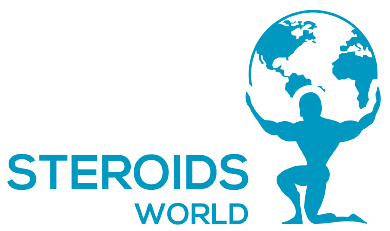Effects of Anabols, Direct and Indirect
Even though testosterone has been manufactured, separated, and the subject of extensive research for many years, there is still considerable disagreement as to how exactly steroids affect muscle growth. As of right now, it is believed that all anabolic/androgenic steroids work primarily by increasing protein synthesis and directly activating the cellular androgen receptor. As a result, the rate at which protein is absorbed by the muscles can be significantly increased if we can supplement testosterone or another anabolic steroid to raise our androgen level.
All anabolic/androgenic drugs stimulate muscular gain mostly due to this. As our hormone levels rise, the androgen receptors become more activated, which eventually speeds up protein synthesis. However, in addition to the generally recognised effect of androgens on protein synthesis, additional indirect pathways may also have an impact on muscle development. An indirect mechanism is not caused by androgen receptor activation but rather by androgens’ effects on other hormones or even by the release of hormones or growth factors that act locally in cells.
Additionally, we must keep in mind that the disposition of muscle mass includes more than just protein synthesis; it also considers things like tissue nutrition delivery and protein breakdown. To gain a whole picture, we also need to consider how these variables interact with androgenesis. Regarding the first hypothesis, we point out that testosterone research indicates that this hormone does not boost tissue amino acid transport. This knowledge likely explains the significant synergy between insulin, a hormone that sharply accelerates the transit of nutrients into muscle cells, and bodybuilders’ observations in recent years. However, we do recognise a second crucial channel via which androgens may impact muscle development through protein breakdown.

Testosterone’s anti-glucocorticoid effect
By having an anticatabolic impact on muscle cells, testosterone (and synthetic anabolic/androgenic drugs) may contribute to gains in strength and bulk. These hormones have been demonstrated to influence the actions of glucocorticoids, a different class of steroid hormone, in the body, making them one of the most significant indirect mechanisms of androgen action. Contrary to what androgens do, glucocorticoid hormones instruct the muscle cell to release protein that has been kept in reserve. The term “catabolism” refers to the breakdown of muscle tissue during this process. When testosterone’s anabolic effects are more apparent than cortisol’s regenerating actions, muscle growth results. The body will normally store more protein than it expels with rigorous exercise and a healthy diet, but this ongoing struggle never ends. However, a substantially greater androgen level can significantly disfavour glucocorticoids when taking anabolic steroids. Fewer cells will get the signal to release protein as a result of their diminished impact, and more protein will eventually accumulate.
It is thought that the androgen displacement of glucocorticoids bound to glucocorticoid receptors is the main mechanism causing this action. In-vitro research has proven that testosterone has a relatively high affinity for this receptor, indicating that some of its anabolic effects are likely directly mediated by this interaction. Additionally, it has been hypothesised that androgens may obstruct DNA’s ability to attach to the glucocorticoid response element directly. Even in the fasting state, steroid injection reduces protein breakdown, which is unmistakably indicative of an anti-catabolic action, even though the precise underlying mechanism is still up for debate.


















